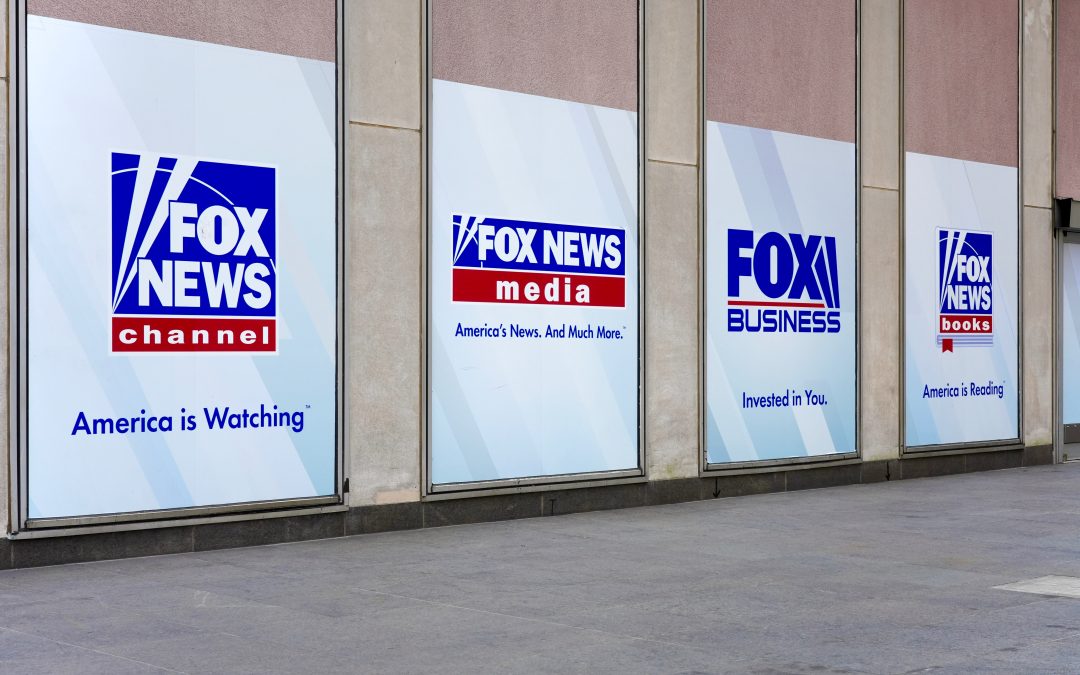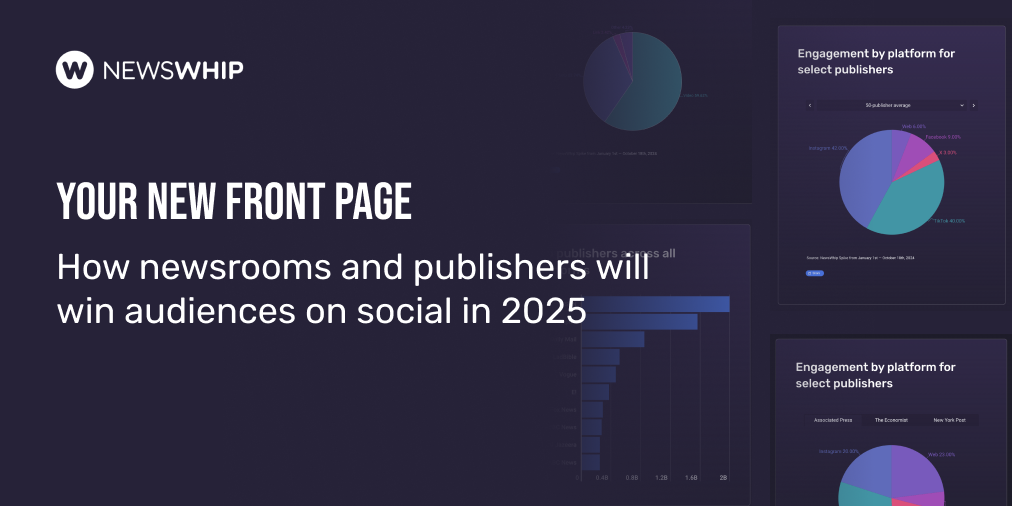After yesterday’s look at the best brands, sports teams and politicians on social media in 2015, we turn our attention to the best publishers on social media in 2015.
With all the sharing and liking, tweeting and double-tapping almost done for 2015, we decided to take stock of what felt like a very significant year in social publishing.
We’re looking back to highlight some of the strongest performers on social media this year, from the names at the very top of everyone’s news feeds each day, to the sites successfully targeting a niche audience on social media.
For the year that it was, we have a few new categories. Video dominated as a content format this year, while more and more publishers become concerned with presenting their content ‘natively’. In both respects, some did better than others there.
We’ll continue to analyse the biggest trends in social distribution in 2016. To make sure you keep ahead of the curve, you can subscribe to our weekly newsletter here.
And without further ado…
Best Sites on Social Media
#1 BuzzFeed
Last year they came in at number two. But 2015 was a huge year from BuzzFeed, as their talented team adapted their content to new formats and social platforms.
Their videos (see below) have been adapted to show other publishers how to make engaging content in an area that’s oversaturated, and they consistently achieve enviable views and engagement numbers.
Meanwhile, their owned properties continue to get shared heavily. We see them consistently attract tens of millions of Facebook engagements on their content every month, with stories going viral with impunity. If you’re counting native content, they get billions of impressions every month.
In terms of new platforms, we’ve seen them try out Line, Kik, and of course, Snapchat Discover, where they post comics and video skits, but also more serious videos documenting Muslim life in America.
In October, Founder Jonah Peretti set out his vision for the site as a ‘global, cross-platform network’. It points to where BuzzFeed see themselves heading—and our social data seems to back up their position.
#2 The Huffington Post
No matter what rankings you look at on social media, the Huffington Post is never far from the top.
A content machine, the Post has managed to put out huge volumes of stories this year. Not only that, but consider the number of Facebook posts, Tweets, Instagram pictures, and videos across different language editions and verticals—it’s a dizzyingly impressive social media presence. The Huffington Post continues to be a global force in news feeds.
In a Q&A on our blog earlier this year, the Social Media Editor for the Huffington Post Canada, Ron Nurwisah, explained how each piece of Huffington Post content is primed to be shared:
“Each editor on HuffPost is trained to craft their stories for Facebook and Twitter (and any other social networks they want to share to). On Twitter, for example, we write each tweet that goes out. On Facebook we stress writing great status updates, picking the right photos, etc. I stress to our team here that we should be spending as much time crafting our social media posts as we do picking our webpage headlines and photos.”
With former Journalism lead at Facebook, Liz Heron, joining the HuffPo as Executive Editor, the Post looks to be doubling down on content in the New Year.
#3 The New York Times
The New York Times’ most shared stories on Facebook this year are a weighty bunch.
Screen addiction (113,000 shares, 233,000 likes). Child abuse in Afghanistan (86,000 shares, 117,000 likes). ‘How nature changes the brain’ (78,000 shares, 256,000 likes).
The numbers on their Facebook most shared list make a mockery of the idea that social media isn’t a place for hard news, discussion, or new ideas.
On Twitter too, they managed to consistently make their presence felt each month. Their most tweeted story of the year was a front page editorial calling for increased gun control, a story significant enough to bridge the interest gaps between print and social media.
End the gun epidemic in America https://t.co/zIp5eCDI4j via @NYTopinion pic.twitter.com/12ykevx1aa
— The New York Times (@nytimes) December 5, 2015
And we saw a real experimental side to the paper of record this year on social. From covering the Pope’s visit to Latin America on WhatsApp, to giving their reporters access to the Times’ Snapchat account at major events, there seems to be a storytelling shift at the Times that goes beyond the website itself.
Best Distributed Channel
#1 – NowThis
What a year for NowThis.
This is a publisher that’s made a point of going to its audience. You might have seen the bold proclamation on their (old) homepage, which came to seem like less of a marketing pitch, and more like a prescient comment on digital media consumption as the year went on.
In June, we recorded NowThis as the most shared publisher of native news video on Facebook this year. It was an impressive accolade, particularly when the competition was largely celebrity pages and viral mills.
In a year when Facebook video become the clearly dominant form of content in news feeds, NowThis gave a masterclass in showing the potential of reaching audiences natively.
But Facebook video isn’t all that they’ve been seeing success with. On Instagram, they’ve taken to posting long captions to give more context to the video clips that they post. Many of their YouTube videos have tens of thousands of views, with a few clocking in with hundreds of thousands.
They achieve over 650 million video views each month, across 16 distribution points, including YouTube, Snapchat, Instagram, Twitter and more. They’re also present on more experimental platforms, such as Kik and Vine.
With German media giant Axel Springer now behind NowThis as a major investor, 2016 looks like it will continue to be a year of growth and news feed dominance for the distributed pioneers.
By the way, Springer’s investment tell us a lot about where people are likely to be consuming media in 2016—just see our round-up of social media editors’ predictions for more of that.
Read our Q&A with NowThis’s VP of Social, Ashish Patel, from earlier this year.
#2 – AJ+
Al Jazeera’s millennial-focused site AJ+ doesn’t look like it’s part of a global news broadcasting giant. Its videos are small and graphic, with few talking heads and no TV studio backdrops.
You won’t find much evidence of rolling news coverage, or traditional cable news broadcasting on AJ+’s hugely popular Facebook page.
Instead, AJ+’s mission is to present and break down complex news topics to a young audience, on their phones and directly in their social feeds.
They focus on specific issues each month, bringing strong reporting to topics like immigration, mental health, and the US education system. It’s a great idea that gives a thread to the various AJ+ pages on different platforms.
#3 – Reportedly
Reportedly launched at the start of 2015 with a baptism of fire.
Just days after the First Look Media news outfit launched, the Charlie Hebdo attacks in Paris gave them their first test in covering breaking news on social media.
Since then, it’s been a tumultuous year in the breaking news space.
What Reportedly does is an intriguing effort to piece together the threads of breaking and developing news stories together in a way that seems natural and informative on different social platforms.
For instance, they’ve mastered the ‘reply-as-thread’ feature on Twitter, to keep followers abreast of all developments.
In May, they announced the launch of a website, but Reportedly still has a fundamentally native distribution model, driven by the engaged communities on each platform.
Best Video Publishers
Video was everywhere in 2015. Facebook decided to take on YouTube as the biggest video source online, and many of our social media experts predicted video continuing to be an enormous growth area in 2016.
Who were the publishers that did it best? The Whippies go to…
#1 – BuzzFeed Food
BuzzFeed Food is our number one leader in producing engaging videos. Their videos are short and snappy, and last an average 24 seconds—short enough to capture our ever-dwindling attention spans. BuzzFeed Food follows the best Facebook tactics we’ve identified previously: in addition to being short, their videos can be played without sound, the majority are square, action-based, and employ a call to action.
One of the most-engaging videos was a tutorial on ‘Oreo Rice’. It showed the action of making the rice, the reactions of an employee trying the recipe, and encouraged viewers to try creating Oreo rice themselves. It had 63.6 million views, 794,000 shares, 520,000 likes, and 165,000 comments.
BuzzFeed’s videos are ubiquitous. It’s difficult to go through one’s newsfeed on Facebook without finding their content. BuzzFeed Founder and CEO Jonah Peretti said that if the number of eyes looking at BuzzFeed content across all platforms were added up, Facebook video would account for 27% of all ‘traffic’ for the site.
#2 – BBC News
With over 26 million fans on Facebook, BBC News has a phenomenal reach. Their average video length is 36 seconds, well within our recommendations. In September, we saw Facebook videos give a boost of 3.25 million engagements to BBC News’s main page.
[fb_pe url=”https://www.facebook.com/bbcnews/videos/10153213901157217/” bottom=”30″]
Despite their typical duration, BBC News’s most-engaging piece of content in the past month was a lengthy 2:29 minutes long. The video reached over 70.2 million views, 1 million likes, 1.65 million shares, and 48,000 comments.
The video transformed the written tribute of Antoine Leiris’s to his late wife Helene into a multimedia piece. Helene was one of the victims of this past November’s terrorist attacks in Paris. The video was well-crafted for Facebook—it used large captions, contextualizing information, and moving images and video of him and his late wife.
The November 2015 Paris attacks saw huge engagement on Facebook, with many of the most shared stories of the month relating to the attacks.
BBC News has adapted their learnings from Facebook to producing content on Instagram. The videos on Instagram are short and captioned, so they may be watched without audio. Though only 1.2 million followers strong on Instagram, the videos consistently receive thousands of likes and hundreds of comments.
And that’s not all–BBC News began branching out to Snapchat and Yik Yak this year as well, keeping themselves ahead of the social media game.
#3 – The Guardian
The Guardian is another publisher that learned how to use Facebook’s love of short video. Much of their success has come from creating video teasers for their longer content that are made with Facebook video in mind.
[fb_pe url=”https://www.facebook.com/theguardian/videos/10153622950316323/” bottom=”30″]
Their 1:03 minute segment of a longer 17-minute documentary about the refugee crisis was adapted with easily-readable subtitles and evocative title cards. The teaser generated big viewership and engagement on Facebook with 624,000 views, 9,648 likes, 6,904 shares, and 354 comments.
Of course, light-hearted content tends to be an easier sell. The Guardian’s video of a beagle setting a world record for most balls caught in one minute drove 10.7 million views and an impressive 23,000 comments.
Though the Guardian didn’t publish the same volume of videos as other publishers’ in 2015, the quality of the videos propelled big engagement.
Best Newcomers
#1 – LittleThings
Describing itself as a purveyor of “inspiring, uplifting, and engaging content”, LittleThings were a surprise breakout in 2015. It first made an impact in our June rankings of the biggest publishers on social, with strong share numbers—upwards of 6.1 million in June alone—showcasing huge engagement from readers.
LittleThings has shown an incisive understanding of its core audience on Facebook, with a diverse range of posts targeted at a parenting demographic. Viral stories and emotive content appeal to users’ sentiment, while topical posts such as healthy recipe ideas at Halloween capture engagement around specific events.
This shrewd strategy has seen LittleThings earn striking numbers, with some individual posts generating over 1 million engagements each. With such a successful 2015 behind them, 2016 looks very bright for the publisher.
#2 – The Dodo
Animal-focused publisher The Dodo has risen impressively through the ranks on social this year. After scoring some big hits with Christmas-themed content last December, their embracing of native content yielded dividends and helped to generate huge amounts of engagement in 2015.
Executive editor Kelly Burke explained the importance of Facebook to the site in a recent Q&A for our blog, noting “Facebook is the most emotional of all social platforms, and since animal content is inherently emotional—The Dodo and Facebook make a great pair.”
[fb_pe url=”https://www.facebook.com/video.php?v=770244149776929″ bottom=”30″]
In this regard, it’s not hard to see why users have responded so enthusiastically to The Dodo. Their Facebook posts mix animal rights and welfare advocacy with cuter, more light-hearted posts of people’s pets or interactions with wild animals. This conscientious tone facilitates earnest discussion and sharing, making The Dodo stand out as one of the leading newcomers of 2015.
#3 – Mic.com
Digital native Mic.com has been around for four years, but 2015 was the year it really became a name to watch.
The ultimate seal of approval may have been its securing of an interview with President Barack Obama, a triumph which prompted considerable speculation among more veteran publishers. The interview speaks to Mic’s growing clout—their audience overwhelmingly comprises millennials (73% of its monthly readers are under 34) and it is this affinity with young people which sparks wider attention.
Yet, Mic are proving to be trailblazers across the board. Our research shows they pull over 66% of their traffic from social, with this young, internet-savvy audience responding to them on multiple social platforms. Their use of Snapchat was profiled in a Digiday piece, as was their success (over 100,000 followers and 6% of site traffic) on Tumblr, a notoriously tricky platform for publishers to crack.
With all this behind it, it’ll be fascinating to see how Mic builds on its successes in 2016.
What were your favourite publishers on social media in 2015? Let us know on Twitter!












